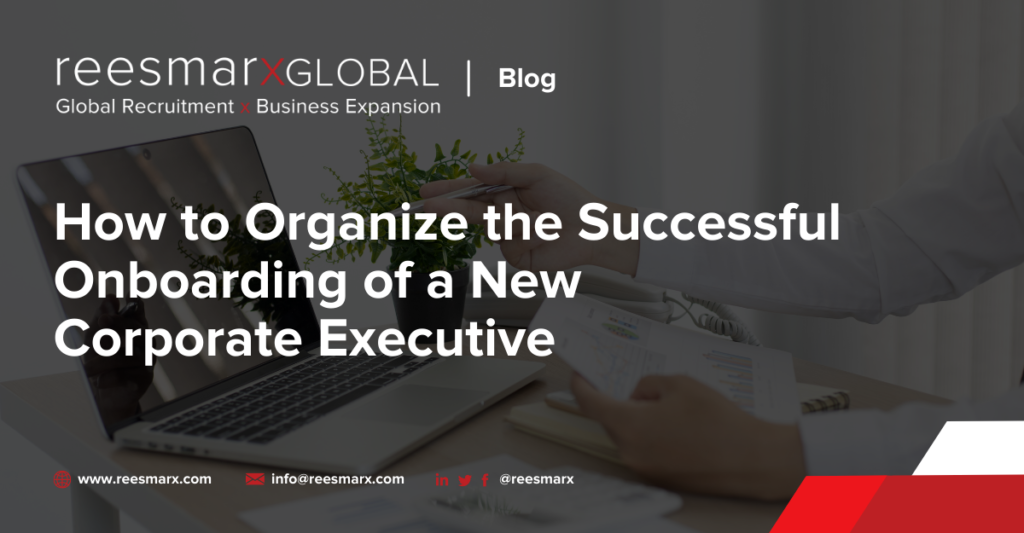Businesses spend a great deal of time, expense and effort to resource the right executive leader for their organization. However, recruiting a talented executive successfully is only the beginning of what should be an organized and efficient process. One that can help them provide value and measurable results in a shorter period of time after they are hired.
The procedure your business has in place with your human resource team to onboard new employees will be far different than the definitive structure you will need to have in place, before a new C-Level executive can effectively lead your team. To help the new executive reach their optimal level of function and productivity, businesses should have a specialized onboarding plan with all the resources the leader will need to acclimatize quickly to the new corporate environment.
Do you currently have a package and formal policy for onboarding executive leaders? If your business has not created one, you are not alone. Executives in any organization may have a lengthy tenure, and since so much effort is placed in recruiting talented leadership, replacing C-Level professionals does not happen that often in corporations. And there can be an unrealistic expectation that a seasoned executive may not even require specialized onboarding, given their extensive experience.
We would like to share our recommendations for providing a complete portfolio of information and experiences, that will help your new executive become proficient quickly, while enjoying the experience of learning about the organizations needs, culture and goals.
Creating Department and Personnel Materials
For some companies, it is a box of files that are organized with all the essential information an executive will need to review before starting day one. For most corporations however, the onboarding starts with the IT department, who provides access to a specialized and secure folder on the corporate intranet (where the essentials have been organized for review).
Unlike onboarding non-management employees, an executive requires knowledge of the departments they will be accountable for. Human resource managers should work with each department manager to organize the pertinent information, and then compile it in an organized way to provide for the executive with:
- A summary of the department function, performance requirements and current projects.
- A list of employees, their role (title) and job function.
- A directory of email addresses, telephone extensions and in some cases cell phone numbers.
- The last performance review (if available) for each member of the department team.
- Digital resources for department manuals, marketing or promotional literature and other assets.
The Human Resource Manager is an invaluable resource that can provide insight into some of the strengths and weaknesses of the team. If flexible hours or remote work arrangements exist for the team, those details should also be included for each employee.
It’s important for a corporate executive to thoroughly understand the existing social and performance culture of the department. That can include a summary of productive relationships within the team, as well as informing the executive of any conflicts or interpersonal challenges that they may encounter, with specific team members.
This information is critical as it helps the executive plan their approach with each team member. It helps them quickly access the knowledge resources within the team, understand workflow procedures, and where opportunities lie for mentoring, adjustment and improvement.
Communication and Reporting Expectations
A new executive leader may know when the next Board of Director’s meeting will be held, but he or she has no idea if the team they are directly managing has traditionally met on a weekly or bi-weekly basis.
- Does the team communicate by SLACK, WhatsApp or through an intranet?
- Do employees prefer to speak on the telephone or receive an email for impromptu requests?
- Is there project management software such as Air Table or Sales Force and apps that are being used to monitor productivity and deadlines?
The style and method of communication within the department, is part of the culture that the new executive will have to learn and manage. Make sure that they have all the details they need to understand when and how often they should be communicating with managers and other employees on the team.
One of the most difficult things for new executives to ascertain when they are starting leadership of a new work group, is the level of feedback that is expected for each employee. In some environments, verbal feedback can be rare, and reserved for formal performance reviews. In other business cultures, recognition and regular (sometimes daily) comments on work and the progress of departmental goals are expected.
While an executive leader may opt to modify some of the aspects of communication style within the department, it is important for them to ingrain themselves in the existing culture, to start building positive relationships. Give them the information they need to start from an informed position with your organization.
For the past twenty years, our Senior Recruiters and Consultants at reesmarx have provided effective executive search services in thirty countries. We understand the transitional stages of introducing a new management talent from both the employer perspective, as well as the needs of the executive which can be overlooked among other administrative activities.
Contact us today for expert consulting and guidance on recruiting C-Level executives in competitive markets. Our team can help you build a positive onboarding experience for the executive, to help them start producing the results you need.






